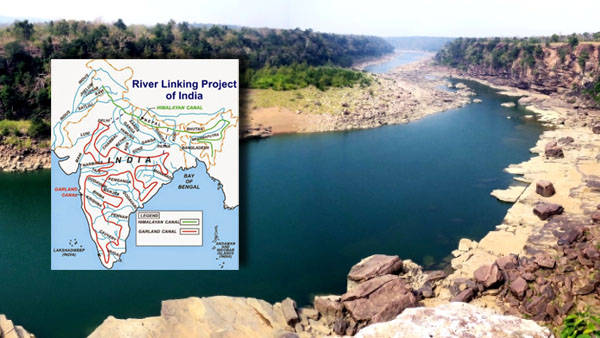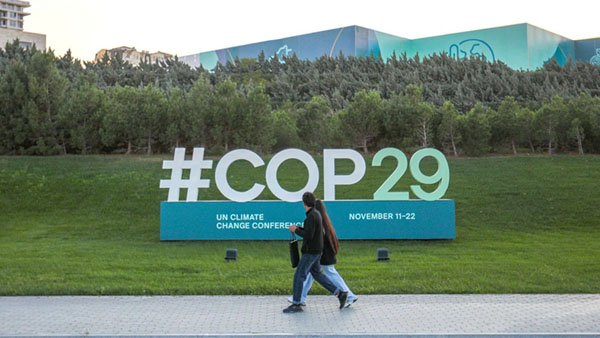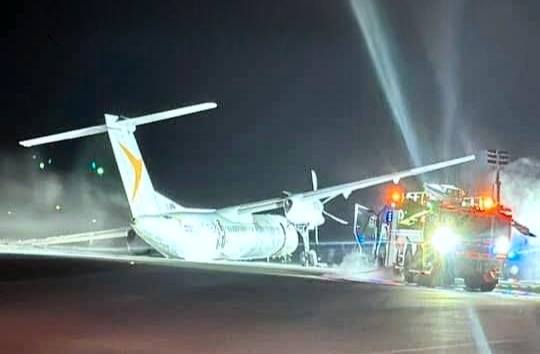By Dipak Kurmi
In the arid plains of Bundelkhand, where the earth cracks under the relentless sun and rivers shrink to a trickle, the promise of water security has been a distant dream for generations. The Ken-Betwa Interlinking Project, the first initiative under India’s ambitious National River Linking Project (NRLP), seeks to change this narrative. With a staggering budget exceeding ₹44,000 crores (approximately $5 billion), this engineering feat aims to bring relief to the drought-stricken Bundelkhand region, while serving as a litmus test for the viability of interlinking rivers on a national scale. However, its path is paved with both lofty aspirations and significant ecological, social, and economic challenges, demanding a nuanced approach to water management in an era of growing environmental consciousness.
The Ken-Betwa project represents a historic milestone in India’s decades-old dream of river interlinking. Rooted in the vision first articulated by British irrigation engineer Sir Arthur Cotton in 1858, the idea of connecting rivers has long captured the imagination of Indian leaders and planners. From B.R. Ambedkar to Atal Bihari Vajpayee, the vision has found champions across political and ideological spectrums. The current Prime Minister, Narendra Modi, has positioned this project as a transformative solution to India’s water woes, especially for regions like Bundelkhand, where recurrent droughts threaten agriculture and livelihoods. By linking the Ken River in Madhya Pradesh to the Betwa River in Uttar Pradesh through a 230-kilometer canal, the project aims to provide irrigation for 1.62 lakh hectares of farmland, generate hydropower, and supply potable water to 62 lakh people.
The project’s significance extends beyond its immediate benefits. Water scarcity and inequitable distribution have long plagued India, where floods ravage some regions while others suffer from chronic drought. Interlinking rivers, proponents argue, can address this imbalance by transferring water from surplus to deficit basins. The perennial Indo-Gangetic rivers could rejuvenate the seasonal rivers of peninsular India, fostering equitable water sharing in an era of rapid population growth and increasing resource demand. The Ken-Betwa link, as the first tangible step in this grand vision, symbolizes India’s determination to overcome logistical, political, and financial hurdles in pursuit of water security.
However, the project also serves as a flashpoint for contentious debates over ecological sustainability, social justice, and the ethics of large-scale environmental interventions. The construction of dams and canals inevitably involves altering natural ecosystems, displacing communities, and disrupting wildlife habitats. In the case of Ken-Betwa, concerns have been raised about the potential submergence of 20 villages and the displacement of over 6,000 people. More alarmingly, the project threatens the biodiversity-rich Panna Tiger Reserve, where 23 lakh trees could be lost, and habitat fragmentation could imperil the tiger population. Critics argue that such ecological costs outweigh the benefits, questioning the premise of categorizing rivers as “surplus” or “deficit” without a nuanced understanding of their natural hydrological roles.
The Prime Minister has sought to assuage these fears, emphasizing that the project will incorporate measures to protect the environment and wildlife. Yet, the broader implications of tampering with natural river flows remain a source of anxiety. Rivers are not mere conduits of water; they are lifelines that sustain diverse ecosystems, nourish agricultural lands, and support countless forms of life. The notion that water is “wasted” when it flows into the sea overlooks its critical role in replenishing soil fertility, sustaining aquatic ecosystems, and fostering mangroves. Disrupting these processes could have cascading effects, from altering monsoon patterns to exacerbating climate change.
International experiences provide cautionary tales. In the United States, for instance, many dams are being decommissioned to restore the natural flow of rivers, reflecting a growing recognition of the ecological harm caused by large-scale water engineering projects. Closer to home, India’s own history of water disputes—both interstate and international—underscores the complexities of river management. The Ken-Betwa project, despite being facilitated by political alignment between the BJP-ruled states of Uttar Pradesh and Madhya Pradesh, has not been immune to political wrangling. Scaling this model to link 30 rivers, as envisioned under the NRLP, could ignite contentious disputes, particularly with transboundary rivers involving neighboring countries like China and Bangladesh.
The financial implications are equally daunting. The estimated cost of interlinking 14 Himalayan and 16 peninsular rivers is pegged at $200 billion, a figure likely to balloon over time. For a developing country like India, allocating such vast resources to a single sector necessitates rigorous cost-benefit analysis and prioritization of alternative solutions. Experts argue that investments in efficient irrigation technologies, wastewater recycling, and the restoration of traditional water management systems could yield comparable benefits at a fraction of the cost.
While the Ken-Betwa project represents a bold step forward, it also underscores the need for a balanced and pragmatic approach to water resource management. Policymakers must resist the allure of grandiosity and focus on minimizing unintended consequences. This requires integrating robust environmental assessments, incorporating local community voices, and fostering adaptive management strategies. The success of this project—and by extension, the entire NRLP—will hinge on its ability to reconcile developmental ambitions with ecological preservation and social equity.
The Ken-Betwa link is more than just a river interlinking project; it is a microcosm of India’s struggle to balance economic growth with environmental sustainability. As civilizations have thrived around rivers for millennia, the lessons of history remind us that water security is not merely about engineering solutions but about respecting the delicate interplay between nature and human needs. In this context, the project serves as both a beacon of hope and a cautionary tale—a reminder that the future of India’s rivers lies not in domination, but in coexistence.
(the writer can be reached at dipakkurmiglpltd@gmail.com)




